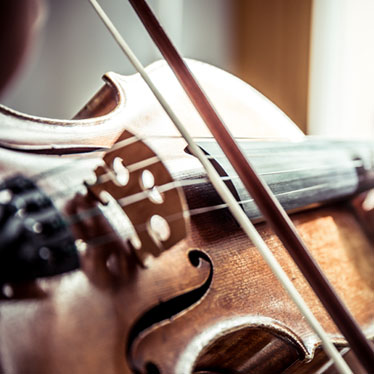Choosing A Wooden Bow And Why

Choosing the bow for your violin is just as a big a decision as choosing the violin. You want to take the same time and care in selecting the right bow that suits your skill level, goals, and budget.
Selecting the material
Historically, violin bows have always been made of wood. Once new technology created advanced materials, carbon-fiber and composite bows were developed. The question of whether to go with a wooden bow or carbon fiber composite one continues. For our purpose here, we're focusing on the different types of wooden bows available. For any violinist, other than a beginner, the more nuanced sounds a wooden bow can produce are typically reason enough to go with wood despite the fact it takes some extra effort to care for the natural material.
All wooden bows are made from either Pernambuco or Brazilwood. The names may be a little confusing because Pernambuco is in fact from a tree species in Brazil. It’s from the Caesalpinia echinate tree. In the 18th century, luthiers discovered that Pernambuco wood has a beautiful mix of strength and resilience that make it wonderfully responsive to a violinist’s work.
Pernambuco wood is now a rare species and harder to come by. The Brazilian government has put restrictions on its harvesting, so perhaps there’s hope the source trees will flourish once again. In the meantime, you can find Pernambuco bows ranging anywhere from $70 to tens-of-thousands of dollars. There is a range of Pernambuco wood quality, which accounts for part of the price range. The Pernambuco bows that are in the thousands of dollars are typically older, even running back hundreds of years. If the bow has a documented lineage, that is who owned the bow through the centuries, now you’re looking at high five figures.
Brazilwood is a composite of tropical wood species, also mostly in Brazil. This wood is typically a bit heavier than Pernambuco, which lessens the “feel” for the violinist. A Pernambuco wood bow is more responsive to the vibrations of the violin, which sends those vibrations back through the bow to the violinist’s hands. It fuses the violinist more deeply with the violin, which is one reason why Pernambuco bows are believed to provide richer sounds and performances.
For beginning or intermediate students who still have work to do before they can discern and appreciate the difference in tone between a Pernambuco or Brazilwood bow, a Brazilwood bow is an excellent choice. They do produce a lovely sound. Their denser weight is actually an advantage with very young students as it makes the bow more difficult to break.
A Brazilwood bow can range anywhere from $25 to $500. The reason for the range is the quality of the wood, craftsmanship and decorative extras. Brazilwood is a general name for a wide range of tropical woods, including using composites of various tropical woods meshed together. So students can feel a difference in balance and feel in their hands based on the specific Brazilwood used.
Crafting the wood to become a bow
For both Pernambuco and Brazilwood bows, the skill and reputation of the craftsman making the bow also impact quality and price. Crafting a violin bow is an art, starting with prepping the wood. For example, Revelle string bows are all handmade in Germany. The Pernambuco wood used for Revelle’s Pernambuco bow is aged and seasoned for 30 years before being crafted into a bow. Since wood is a living, breathing material, the way the aging and seasoning process is done directly affects the quality of the bow that can be made from it. Revelle’s Brazilwood bows are also aged and seasoned to achieve the highest quality feel and sound possible.
Leveling up your bow to match your skills
A violin bow is so personal. How it feels in your hand – the ease with which you can move it across the strings. You have many factors to consider in addition to its materials. The fundamental question of whether to go with a Pernambuco or Brazilwood bow depends on your ear and your skill level. If you’re an intermediate violinist with an ear that can distinguish the difference in what you hear when playing with a Pernambuco or Brazilwood bow, it’s time to level up. If you can’t yet hear the difference, it’s time to level up your ear training!


